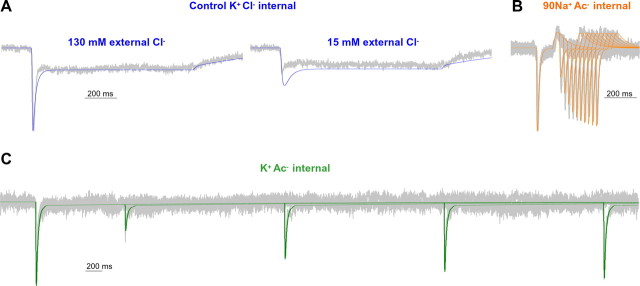Figure 10.
An explicit alternating access model can account for the regulation of AMPH-induced currents by Cl−. The model simulation (color) is superimposed on the experimental data (gray). A, hDAT currents at −60 mV in response to a 1 s application of 10 μm AMPH with control (K+Cl−) internal solution were normalized, aligned to the time of the peak, and averaged among cells (n = 3). External Cl− was substituted by Ac− to reduce [Cl−] to 15 mm. B, C, Mean pooled experimental data for representative cells (n = 4) and model simulations for paired-pulse responses to 100 ms applications of 10 μm AMPH at a variable interval. The external solution was Na+Cl−. The internal solution was 90 mm Na+ Ac− (90 mm Na+, 30 mm K+, 120 mm Ac−, 2 mm Cl−) or K+ Ac− (120 mm K+, 120 mm Ac−, 2 mm Cl−).

